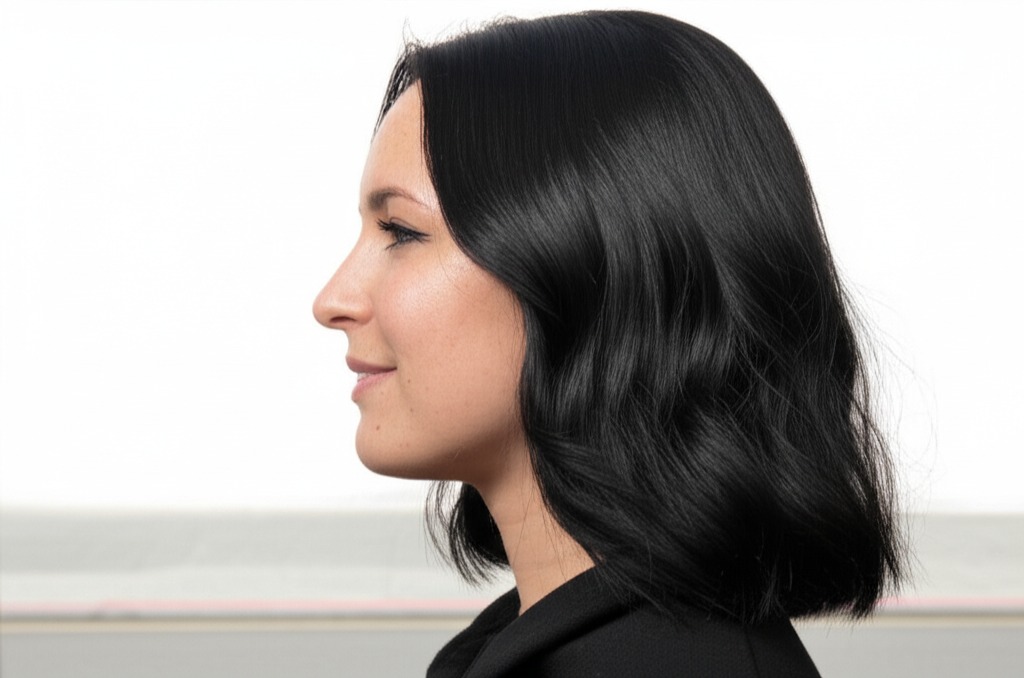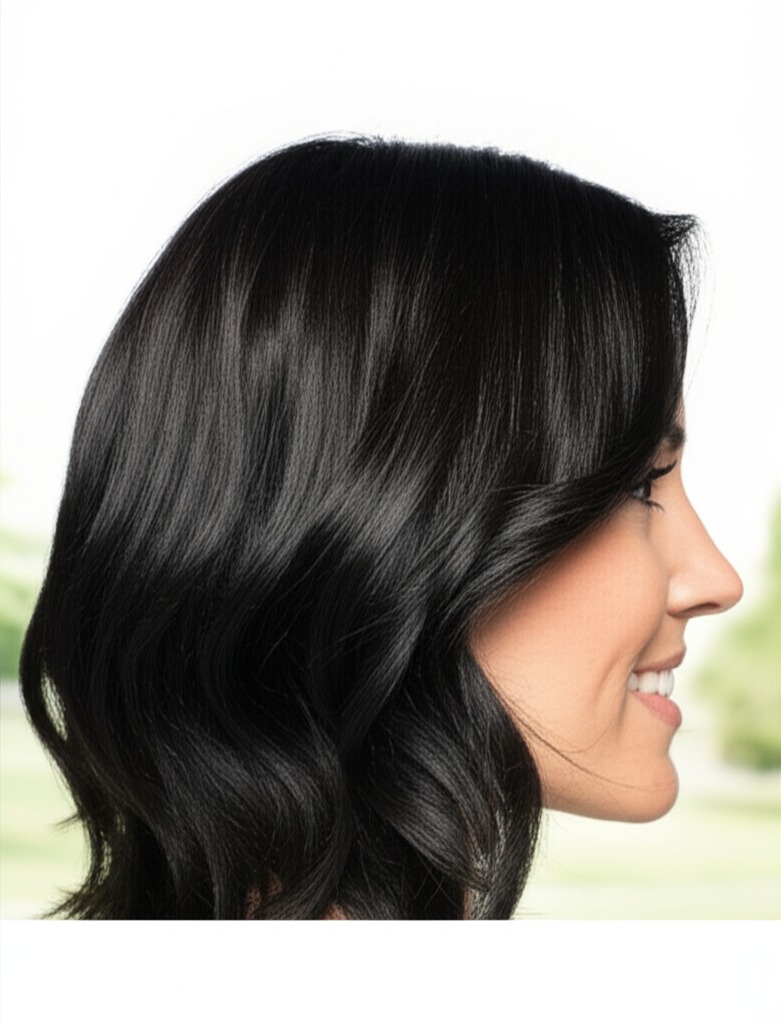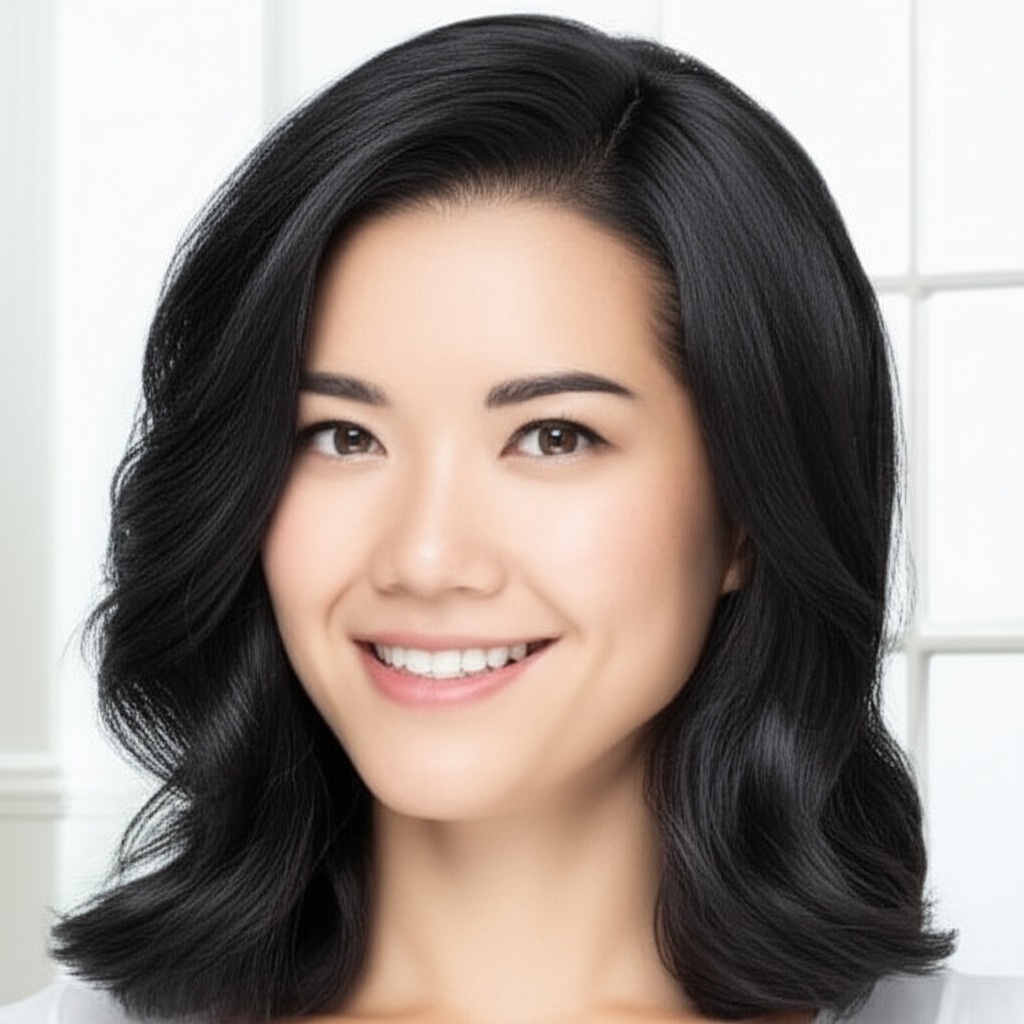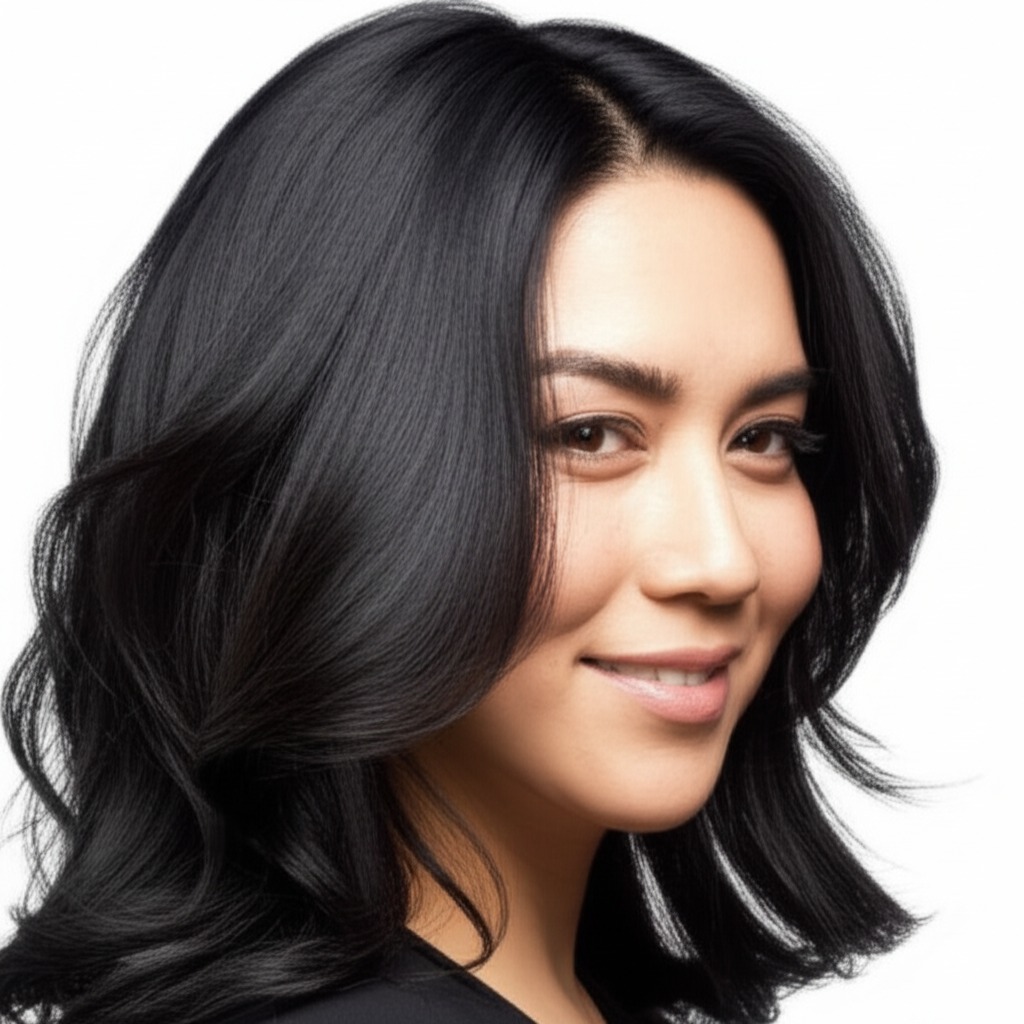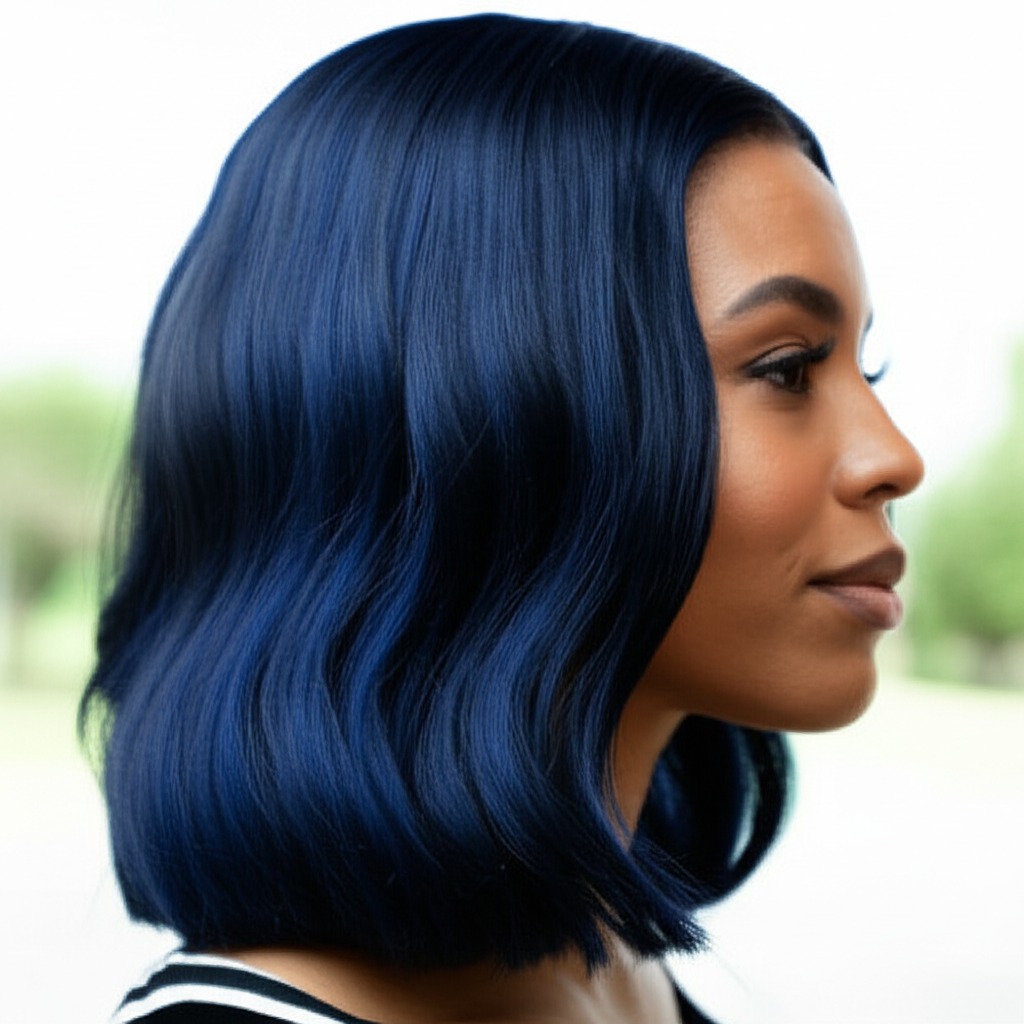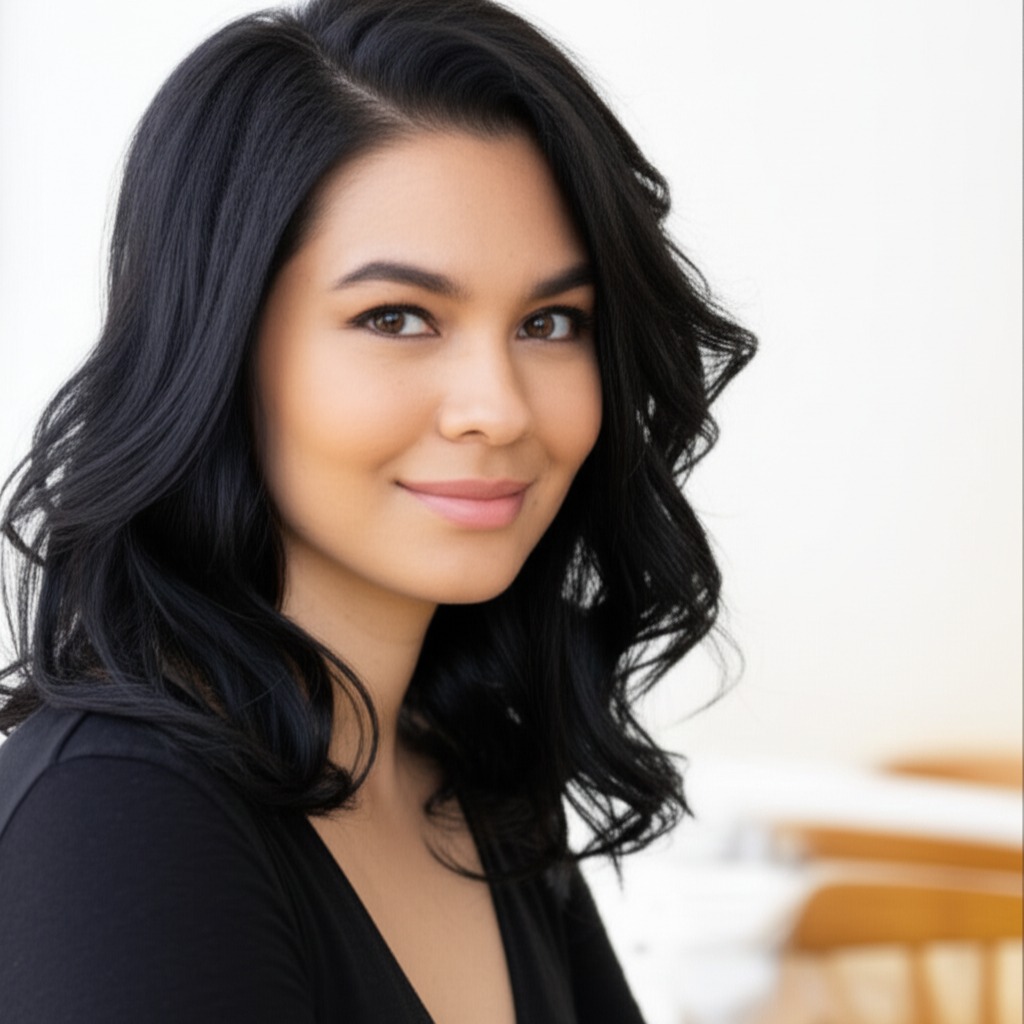#Jet Black Hair Color: A Comprehensive Guide
Jet black hair is a bold statement – it’s dramatic, striking, and undeniably chic. But achieving the right jet black and keeping it looking its best requires more than just picking up any box of dye. This guide will walk you through everything you need to know about rocking this intensely dark shade.
#1) Understanding Jet Black: Shade Definition
Jet black isn't simply "black." It’s a specific tone with subtle nuances that affect how it looks on different people.
- Undertone: True jet black leans cool. This means it has blue or violet undertones, which help prevent it from looking muddy or flat. Warm blacks (with red/orange undertones) are less common and can pull too orange if not expertly applied.
- Depth (Levels): Levels refer to the darkness of a hair color on a scale of 1-10 (1 being the lightest, 10 being the darkest). Jet black typically sits around level 1 or 2. The closer you get to level 1, the more intense and saturated the black will appear.
#2) Who Does Jet Black Flatter?
While jet black can be stunning on many, it’s not a one-size-fits-all color. Consider these factors:
- Skin Tone & Undertone:
- Best for: Cool or neutral skin tones (think fair with pink undertones, olive skin, and medium/deep skin with cool undertones). The coolness of the black complements cooler complexions.
- Can work for: Some warmer skin tones can pull off jet black, but it requires careful consideration and a skilled stylist who can adjust the formula to minimize any orange or brassy tones. A slight blue-black shade is often more forgiving.
- Generally not recommended for: Those with very warm (golden, peachy) skin tones – jet black can sometimes accentuate redness and make them look washed out.
- Eye Color: Jet black hair makes eyes pop. It particularly enhances:
- Brown Eyes: Creates a striking contrast and intensifies their warmth.
- Blue/Green Eyes: The dark color makes these eye colors appear even more vibrant.
- Dark Hazel Eyes: Deepens the richness and complexity of hazel tones.
- Natural Level Starting Point:
- Dark Hair (Levels 2-4): This is the easiest transition! You'll likely achieve jet black in one application.
- Medium Hair (Levels 5-7): Requires more processing time and potentially multiple applications to reach full opacity, but it’s still achievable. A strand test is essential.
- Light Hair (Levels 8+): Achieving true jet black on light hair is a significant undertaking involving bleaching, which can damage the hair. It's generally not recommended without extensive consultation and professional expertise.
#3) Technique Options: From Solid to Subtle
How you apply jet black dramatically impacts the final look.
- Single-Process: The most straightforward application – covering all hair with a single color formula. Best for those already close to a dark level or wanting a solid, uniform shade.
- Highlights/Lowlights: Adding subtle highlights (lighter pieces) or lowlights (darker pieces) can add dimension and soften the intensity of jet black. Consider very fine, cool-toned highlights if you want some brightness.
- Babylights: Extremely delicate highlights that mimic natural sun-kissed strands. Softens a harsh look but requires significant upkeep.
- Gloss/Toner: A gloss or toner can be applied after the main color to deepen the black, add shine, and refine the undertone (ensure it's cool-toned).
- Balayage-Effect vs Solid: A balayage application creates a softer transition with less harsh lines. This works well if you want dimension or are concerned about visible roots as they grow in. A solid application provides full coverage and maximum impact.
#4) Maintenance & Longevity: Planning for the Long Haul
Jet black requires commitment!
- Wash Frequency: Less is more! Aim to wash your hair only 2-3 times a week to preserve color vibrancy.
- Toner Refresh: Cool toners may need refreshing every 6-8 weeks, especially if you notice any warmth (orange/red) developing.
- Root Growth Pacing: The contrast between jet black and new growth can be stark. Consider strategically placed balayage or a slightly softer black root shadow to blend the transition.
- Budget/Time Planning: Jet black is generally more budget-friendly than lighter colors (less bleaching involved). However, regular salon visits for toning and touch-ups are essential. Expect appointments every 6-8 weeks, with potential longer intervals if you opt for a balayage effect.
#5) Seasonality & Pairing With Cuts: Adapting to the Times
- Seasonal Tweaks: In winter, jet black looks rich and dramatic. In summer, consider adding subtle cool-toned highlights or a gloss to prevent it from looking too flat in bright sunlight.
- Pairing with Cuts:
- Bob/Lob: Jet black creates a sleek, modern look for these classic cuts.
- Long Layers: Adds movement and dimension while maintaining the dramatic impact of the color.
- Pixie Cut: A bold choice that emphasizes edgy style – works best on those with cooler skin tones.
- Event/Occasion Picks:
- Work: A professional and polished look for conservative environments.
- Daytime: Can be softened with a matte finish or subtle texture.
- Evening: The ultimate in sophistication, especially when paired with glossy hair.
- Weddings: Elegant and striking – consider adding subtle highlights to avoid looking too severe.
#6) At-Home Care: Protecting Your Investment
Proper care is vital for maintaining jet black’s vibrancy and health.
- Sulfate-Free Shampoo & Conditioner: Sulfates strip color, leading to fading.
- Clarifying Cadence: Use a clarifying shampoo sparingly (once or twice a month) to remove buildup from styling products – but be aware it can also fade the color slightly.
- Heat Protection: Essential! Apply heat protectant before using any hot tools (straighteners, curling irons).
- Color-Safe Styling Tips: Avoid harsh chemicals and excessive sun exposure. Rinse hair with cool water after washing to seal the cuticle.
- Product Checklist: Sulfate-free shampoo & conditioner, color-safe deep conditioner, heat protectant spray, leave-in conditioner.
#7) Common Pitfalls: Avoiding Color Mishaps
- Brassiness/Warmth: The biggest challenge! Ensure your stylist uses a cool-toned formula and consider purple or blue shampoos to neutralize any unwanted warmth.
- Banding: Uneven color application can create noticeable bands of color, especially on hair that has been previously colored. A skilled stylist will ensure even saturation.
- Patchiness: Can occur if the hair isn't properly saturated during application. Strand tests are crucial!
#8) Pros & Cons: Weighing Your Options
Pros:
- Dramatic and Stylish: Makes a bold fashion statement.
- Generally Affordable: Less expensive than lighter color transformations.
- Flattering for Many Skin Tones (with the right undertone): Enhances eye color and features.
Cons:
- High Maintenance: Requires regular toning to prevent brassiness.
- Fade Risk: Color can fade quickly if not properly cared for.
- Limited Versatility: Difficult to lighten significantly without damaging hair.
#9) Salon Consultation Script: Setting Expectations
Before committing, discuss these points with your stylist:
- "I'm looking to achieve a true jet black color."
- "My skin tone is [describe your skin tone and undertone]."
- "What level is my natural hair color?"
- “Can we do a strand test before applying the colour?”
- "How will you ensure the color stays cool and prevents brassiness?"
- "What’s the best routine for at-home care to maintain this shade?"
- "What's the expected timeframe between salon visits?"
#10) FAQs: Your Burning Questions Answered
- Can I dye my hair jet black if it’s already dark brown? Yes, but a strand test is crucial to ensure even color saturation and avoid unwanted tones.
- Will jet black make my teeth look yellow? Yes, very dark colors can sometimes create this optical illusion. A gloss with blue undertones can help counteract this effect.
- How long does jet black hair color last? It typically lasts 6-8 weeks before needing a toner refresh and longer between full applications if you're starting from a darker base.
- Can I use purple shampoo on jet black hair? Yes, but sparingly! Too much can make your hair look lavender.
- Is it damaging to my hair? The process itself isn’t inherently more damaging than other color treatments, but frequent toning and heat styling can cause dryness and breakage.
- Can I go lighter from jet black? Yes, but it's a complex and potentially damaging process that requires multiple sessions with a skilled professional. Be prepared for significant hair damage!
With careful planning, the right expertise, and consistent care, you can rock stunning jet black hair that turns heads.




